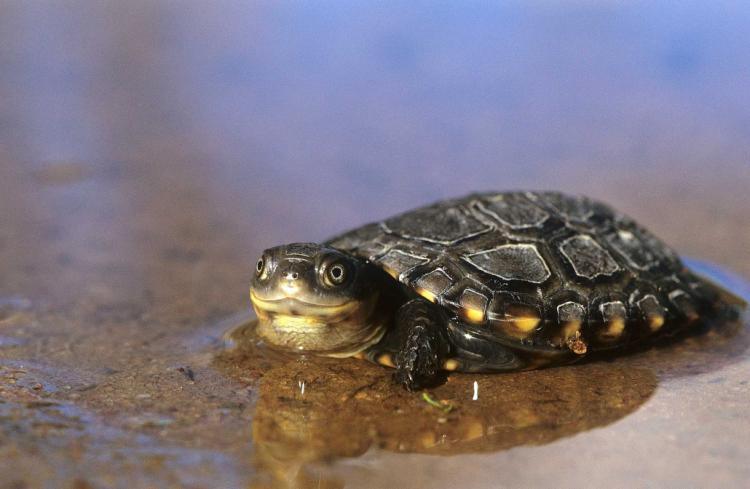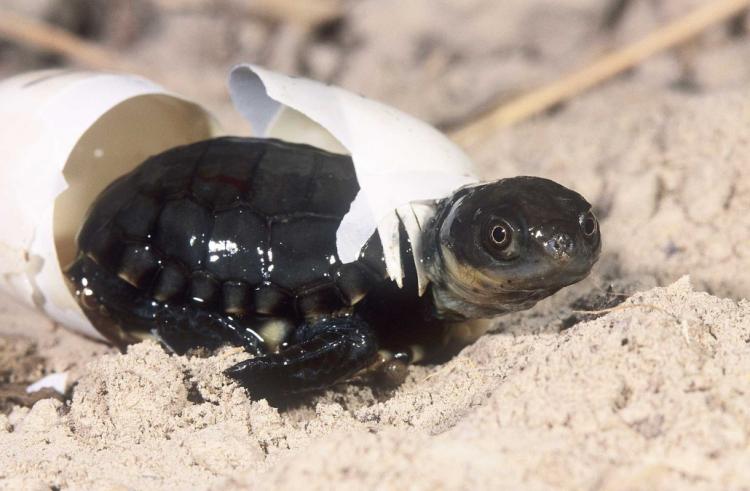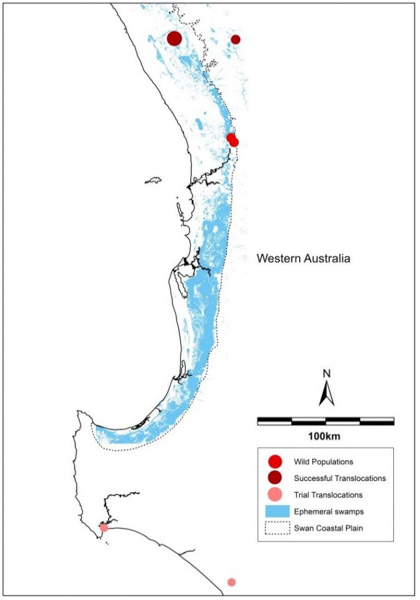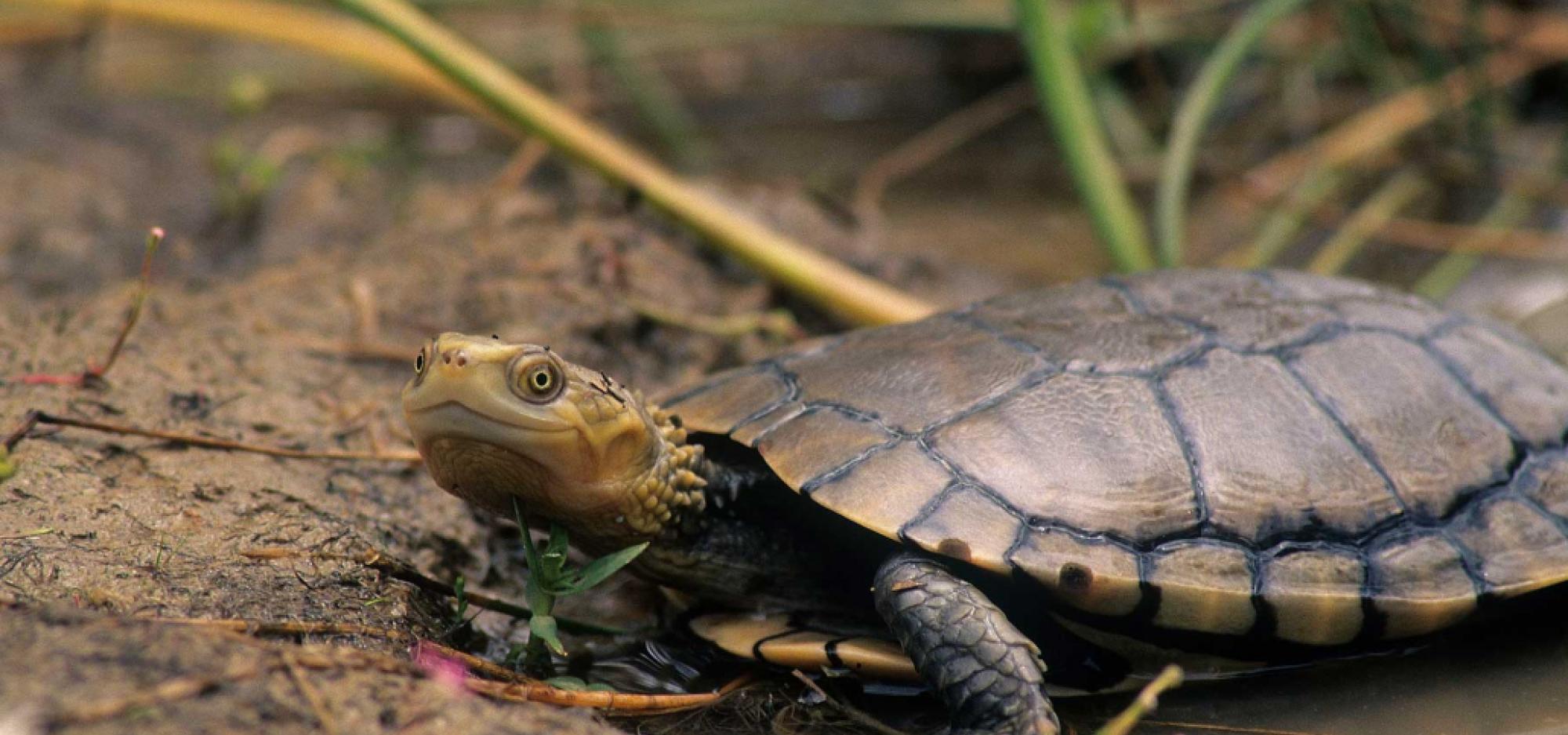
Nyoongar Name: Yarkiny
Scientific Name: Pseudemydura umbrina
Common Name: Western Swamp Tortoise
Conservation status: Critically Endangered. This means a species has an extremely high chance of dying out or becoming extinct in the future.
Fun facts
- The Western Swamp Tortoise, or Yarkiny is a short-necked, freshwater tortoise found only in a small number of swamps near Perth in Western Australia. They are semi-aquatic, meaning that they spend time both in the water and on land.
- They spend the spring months in water when the swamps are full and the water has warmed. When the swamps dry up in summer, they leave the water and find somewhere cooler and undercover to aestivate (slow their activity down).
- They have webbed toes with five claws on each foot and are carnivorous eating only live food including insect larvae, crustaceans, earthworms and tadpoles.
- In November through to December, they lay 3–5 eggs in an underground nest The young hatch the following winter the size of a ten cent coin. The young need to be 11–15 years of age before they can breed.
- They have some very specific needs to survive and thrive. Soil temperatures need to be less than 34°C for eggs to survive, and water temperatures need to be between 14°C and 30°C for western swamp tortoises to remain in the water and feed.
- Amazingly, under ideal conditions they can live to 60 years of age.
- They were presumed extinct until they were rediscovered in 1953. How exciting must that have been?
- Researchers are using radio transmitters to help locate tortoises that have been released into the wild.

Not So Fun Facts
The Western Swamp Tortoise is Australia’s most endangered reptile. Not something we should feel proud of.
It is estimated that the total population of the Western Swamp Tortoise is between 400-500 individuals.
Threats to their survival
The Western Swamp Tortoise, like many of our native animals, has suffered from the introduction of feral pests and widespread habitat destruction. Both eggs and hatchlings are eaten by native and introduced predators, including foxes, feral pigs, ravens, goannas and birds of prey.
Over time the expansion of the Perth metropolitan area encroached on the tortoises’ habitat, and new developments squeezed the reptiles into increasingly smaller spaces restricting where they could survive.
They have very specific habitat needs. Many of the soils around Perth are sand, but this tortoise requires ephemeral (not permanent) swamps with clay on the bottom, areas that are not so common.
Many of these wetlands no longer exist as they were used in the early days of Perth’s settlement for agriculture and making bricks for homes.
Bushfires and wildfires damage their swampy habitat removing available places for them to survive.
The effects of reduced rainfall as a result of climate change means that there is less water available and the wetlands they require get drier and drier and no longer suitable for them.
Community awareness plays a critical role is saving such species.
Find me in the wild

Possible historic distribution (ephemeral swamps on the Swan Coastal Plain) and current locations of the Western Swamp Tortoise (Parks and Wildlife, 2017).
Find me at the Museum
You can find me in the City Life section within the Wild Life Gallery on Level 3 of WA Museum Boola Bardip.
Image credits: Header image and images in text courtesy of Friends of the Western Swamp Tortoise. Map courtesy of the Department of Biodiversity, Conservation and Attractions.
